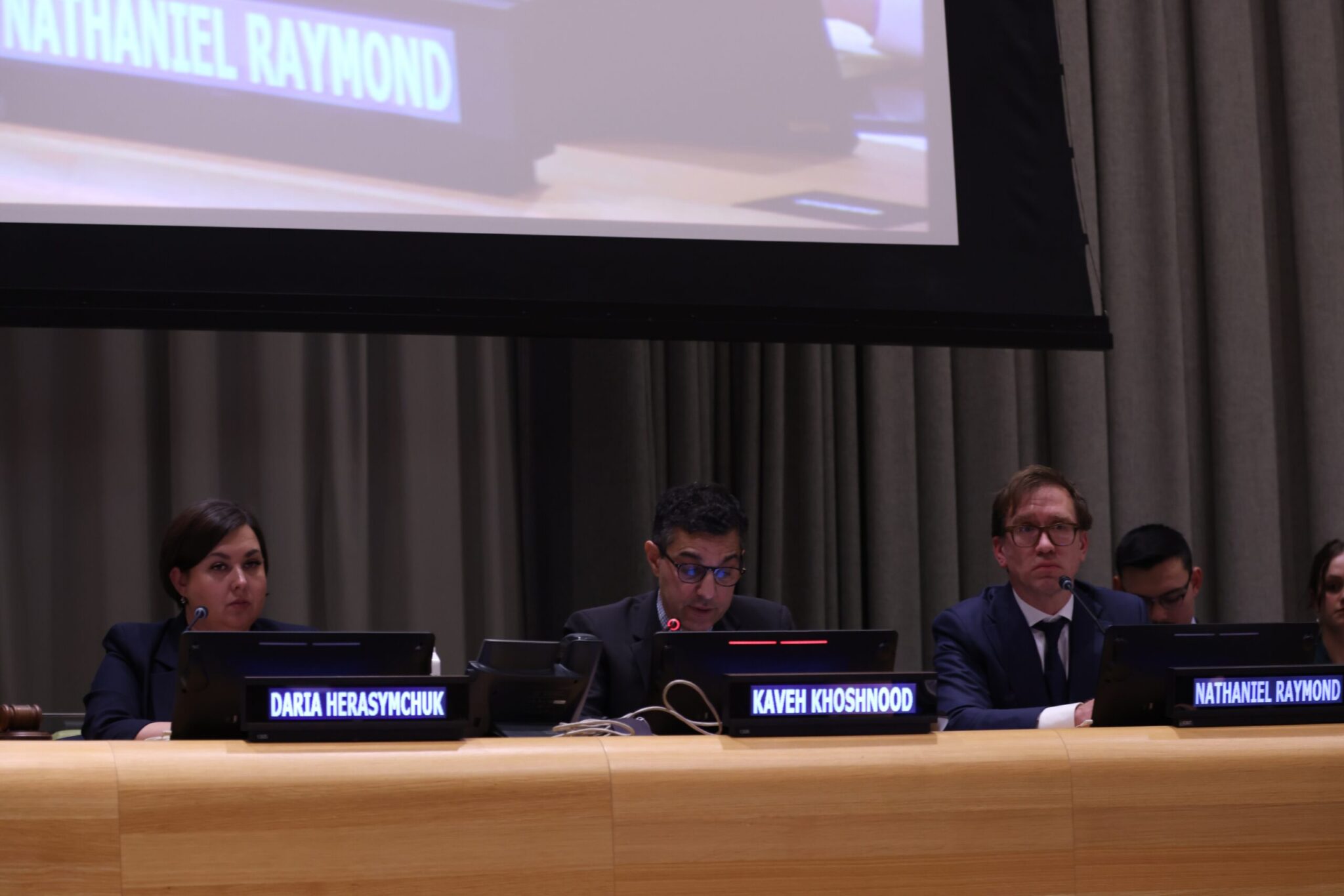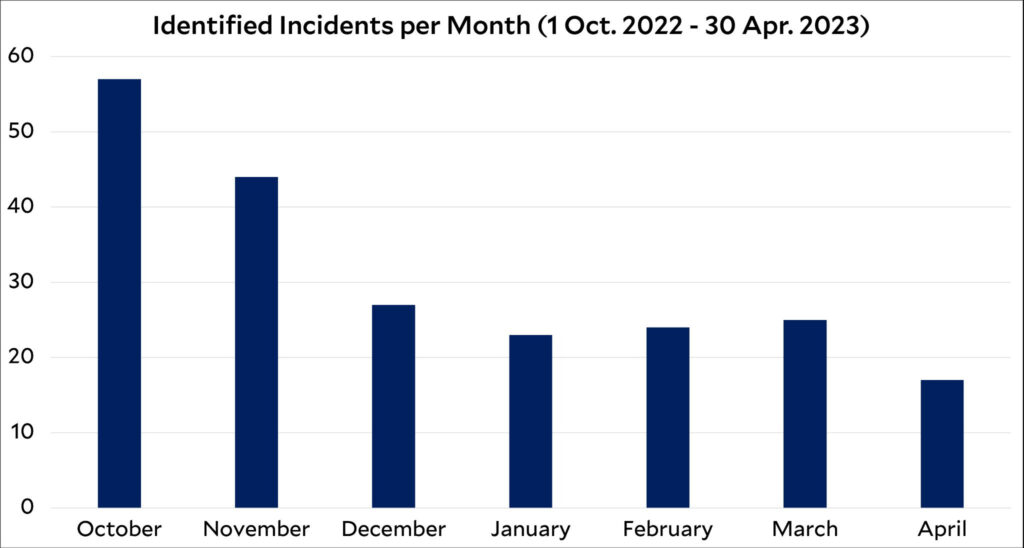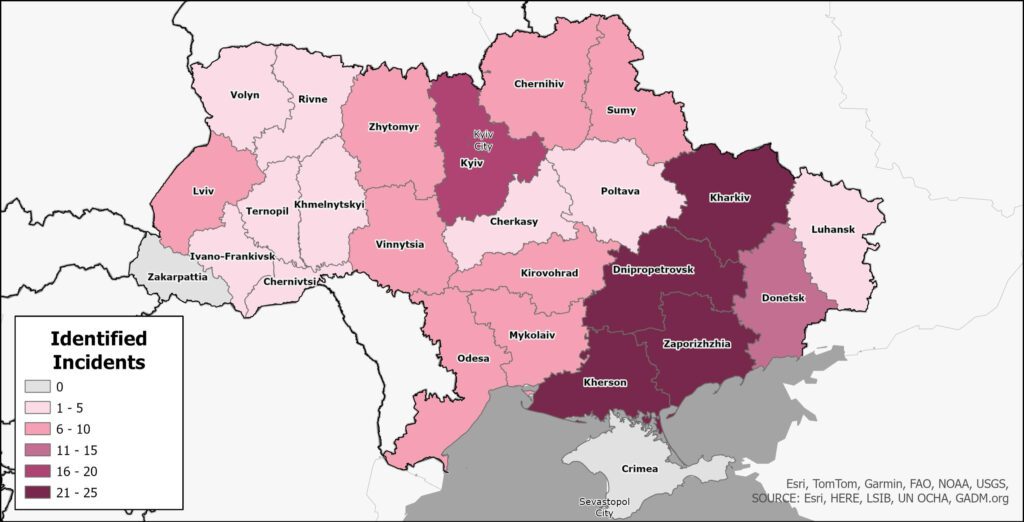Humanitarian Research Lab finds systematic Russian targeting of Ukrainian energy infrastructure
In a report released Thursday morning, the Yale School of Public Health’s Humanitarian Research Lab documented Russian targeting of energy infrastructure across Ukraine — a potential violation of international humanitarian law.

Courtesy of the Permanent Mission of Ukraine to the United Nations
A report from the School of Public Health’s Humanitarian Research Lab, or HRL, has documented widespread and systematic Russian efforts to damage Ukraine’s transmission and power generation infrastructure. The findings in the report potentially implicate Russia in violations of international humanitarian law.
Released on Thursday, the HRL produced the report as part of the Conflict Observatory — a U.S. State Department-funded program that collects and analyzes evidence of atrocities using open-source data and satellite imagery.
The report identifies 223 instances of damage to power generation and transmission infrastructure over seven months in the past year. According to the research, the damage appears consistent with a “widespread and systematic effort to cripple vital power generation and transmission infrastructure across Ukraine.”
“The report is a critical first step toward accountability for Russia’s attacks on Ukraine’s energy infrastructure — attacks that have affected the lives of ordinary Ukrainians throughout the country,” Oona Hathaway, the Gerard C. and Bernice Latrobe Smith Professor of International Law and a contributor to the report, wrote to the News. “It sets out a roadmap for prosecutors, which they will be able to use as they build their cases.”
The Yale researchers focused on the period between Oct. 1, 2022, and April 30, 2023, when Russian officials claimed that a wave of attacks on Ukrainian energy infrastructure was in retaliation for an explosion at the Kerch Bridge in Russian-occupied Crimea on Oct. 8, 2022.

Damage to civilian energy infrastructure — which controls electricity and heating for Ukrainians — is particularly dangerous to civilians during Ukraine’s cold winter months, the report says.
According to the report, the timing and location of the attacks, along with statements from Russian public officials, are consistent with a deliberate attempt to destroy power infrastructure across Ukraine. But the attacks that the HRL report documented are not concentrated in active military zones.
Instead, the attacks on Ukrainian power infrastructure are spread across nearly all of Ukraine’s administrative regions, including in regions that are removed from the frontlines of combat. The report also determined that the Russian military had targeted power infrastructure beyond the extent needed to achieve a military advantage.

As a result, the researchers believe that Russian attacks may violate international humanitarian law, which requires combatants to take “all feasible precaution to minimize injury to civilians and damage to civilian objects,” the report says.
The researchers also documented statements from Russian officials that described the attacks as political retaliation and intended to cause widespread civilian suffering, motives that might place the Russian attacks in violation of international law, including the terms of the Fourth Geneva Convention.
“These statements, together with the aggregate data, indicate that Russia’s attacks on Ukraine’s power generation and transmission infrastructure may constitute deliberate targeting that is inconsistent with international humanitarian law,” the report said.
To obtain the data, HRL used what they describe as a “fusion methodology,” which combines open-source data analysis and high-resolution satellite imagery to document conflict-related damage to power generation and transmission infrastructure.
These tools use artificial intelligence models to filter through large sets of data and flag imagery that might indicate damage.
To dig through large quantities of data, the researchers feed the AI approximate parameters for imagery — like that of tanks or an explosion — that they expect to find. Attaching these general characteristics to pinpoint a target, Raymond said, is a lot like describing a stolen bike to the police.
“Say you had your bike stolen at Claire’s Corner Copia and had to do a police report to the police department,” Raymond said. “What make or model was it? What color was it? What are other attributes about the bike? That’s going to help us find it.”
In the two years since the start of the Russian invasion of Ukraine, the HRL has produced reports that have documented alleged Russian war crimes and humanitarian atrocities in the public eye. Their research has been cited by over 4,000 media outlets, the United States House of Representatives, the U.S. Department of State and the International Criminal Court. The ICC has used their findings as the basis of prosecutions of senior Russian officials, including Russian President Vladimir Putin.
Last February, Raymond and Kaveh Khoshnood, an associate professor of epidemiology and the faculty director of the HRL, authored a report that documented the systematic, forced transfer and deportation of thousands of Ukrainian children to Russia across a network of 43 re-education and adoption facilities. They presented their results, including that the Russian deportation network could constitute a violation of international human rights law, at a United Nations summit later that month.
Since then, the HRL has documented the deportation of children to Belarus by the Lukashenka regime, has located detention facilities for Ukrainian civilians, assessed the destruction of Ukraine’s crop storage infrastructure and identified mass graves. Raymond’s team has documented damage to hospitals and schools, mapped torture and detention facilities and tracked the forced passportization of Ukrainians — mandating that civilians adopt Russian nationality — in occupied areas.
Producing these reports, Raymond told the News, is a paradoxical experience.
“If you do it right, you feel two things at once. One is an immense professional satisfaction on having achieved, hopefully the highest scientific standard of assessment of an incident or trend that can be done through these methods,” Raymond said. “The other feeling is the exact opposite: it is a mixture of horror at what happened and frustration, often about a lack of response to it.”
Raymond’s journey to the HRL began with firsthand experiences in disaster response. As an aid worker during Hurricane Katrina, he said he noticed a lack of remote data and communication networks for disaster response. The absence prompted him to begin developing fusion methodologies integrating open source and remote sensing data, just as the HRL used in Thursday’s report.
By 2011, Raymond moved to Harvard University, where he directed the Harvard Humanitarian Initiative’s Satellite Sentinel Project, a program backed by actor George Clooney that used satellite imagery to create an early warning system against mass atrocities in Sudan and South Sudan. The next year, he helped establish Harvard’s Signal Program on Human Security and Technology, which began developing ethical and technical standards digital atrocity monitoring.
Having been at Yale since 2018, Raymond leads the HRL’s efforts to navigate a deluge of data. His team of researchers includes linguists, imagery analysts and epidemiologists to parse information and identify monitoring objectives. Developing these methodologies, Raymond said, is like being a professional golfer.
“My job is to figure out: do we use the nine wood? A putter? A five iron? And on some holes, you may use multiple golf clubs,” Raymond said. “The ability to know how to select the clubs is as important as swinging, and that comes from the experience of having tried to get a lot of different types of targets in a lot of different ways.”
For Raymond, the objective of digital atrocity monitoring is not to replace witness testimony. Instead, by cross-corroborating sources and creating a “scientifically validated” record of events with high confidence, he said he hopes to elevate witness testimony of humanitarian atrocities.
“I am deeply grateful for their science-informed approach to action,” Megan Ranney, Dean of Yale School of Public Health, wrote in an email to the News.
The Russian invasion of Ukraine started on Feb. 24, 2022.







